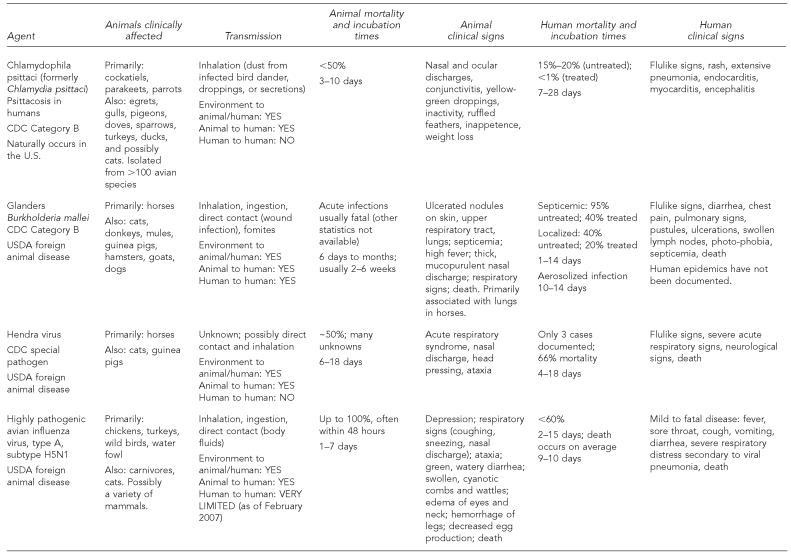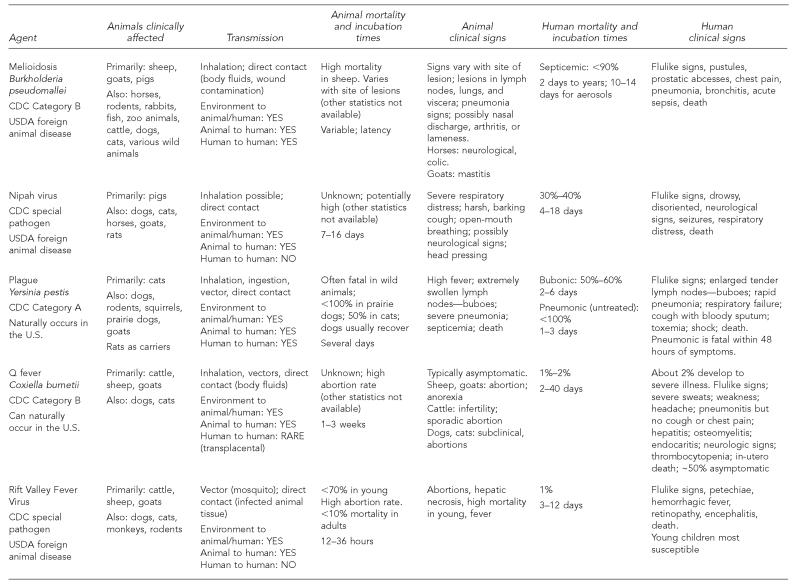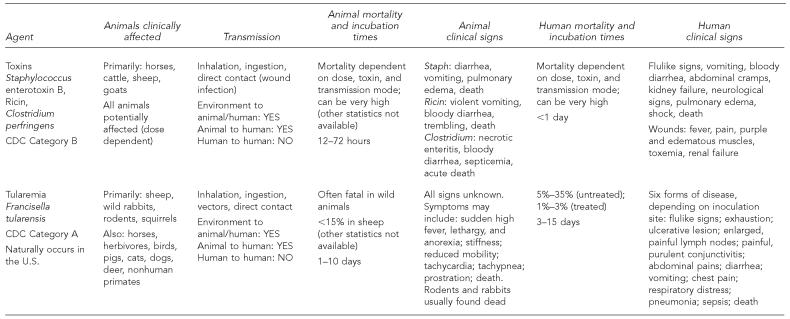Figure 6.
Centers for Disease Control and Prevention (US). Bioterrorism overview: bioterrorism agent categories [cited 2007 Feb 20]. Available from: URL: http://www.bt.cdc.gov/bioterrorism/overview.asp
Aiello SE, editor. The Merck veterinary manual. 8th ed. Whitehouse Station (NJ): Merck – Co., Inc.; 1998.
The Center for Food Security and Public Health. Iowa State University. Animal disease information [cited 2005 Sep 20]. Available from: URL: www.cfsph.iastate.edu/DiseaseInfo/default.htm
Center for Infectious Disease Research and Policy, University of Minnesota. Bioterrorism [cited 2006 Feb 26]. Available from: URL: http://www.cidrap.umn.edu
American Veterinary Medical Association. Potential zoonotic agents of bioterrorism. Anthrax [cited 2006 Mar 8]. Available from: URL: www.avma.org/public_health/biosecurity/default.asp
U.S. Department of Agriculture. Animal and Plant Health Inspection Service. Publications. Animal health [cited 2005 Mar 10].Available from: URL: http://www.aphis.usda.gov/publications/animal_health/index.shtml
World Health Organization. Avian influenza [cited 2006 Jan 10]. Available from: URL: http://www.who.int/csr/disease/avian_influenza/en
Beigel JH, Farrar J, Han AM, Hayden FG, Hyer R, de Jong MD, et al. Avian influenza A (H5N1) infection in humans. N Engl J Med 2005;353:1374-85.
Chin JE, editor. Control of communicable diseases manual. 17th ed. Washington: American Public Health Association; 2000.
Morrison G. Zoonotic infections from pets. Postgrad Med 2001;110. Also available from: URL: http://www.postgradmed.com/issues/2001/07_01/morrison.htm [cited 2006 Jan 19].
CDC = Centers for Disease Control and Prevention
GI = gastrointestinal
USDA = U.S. Department of Agriculture




